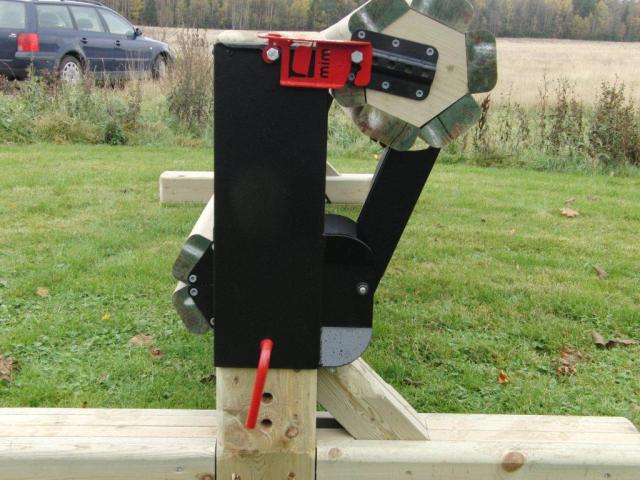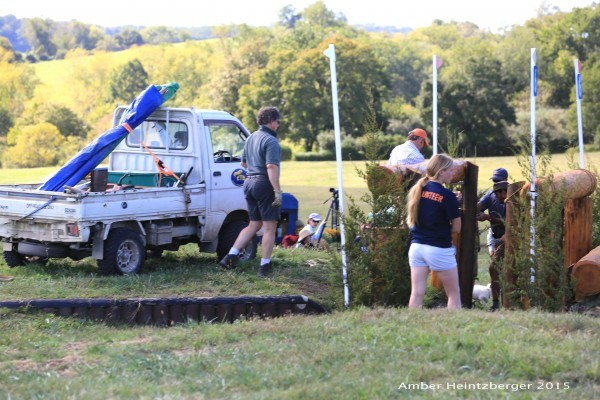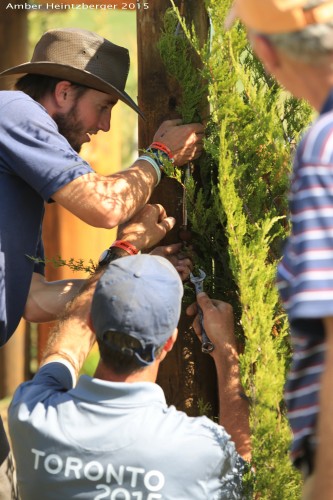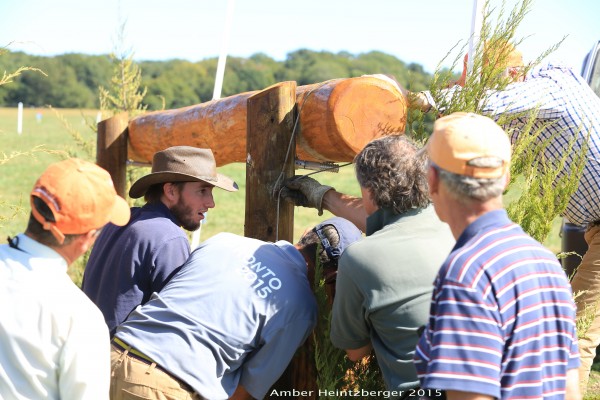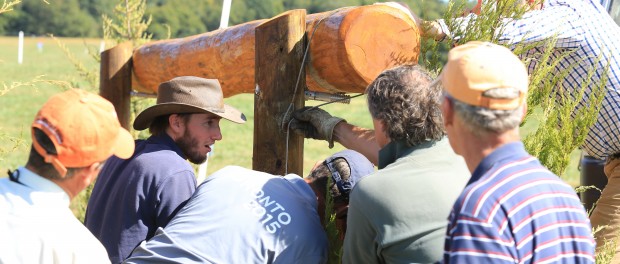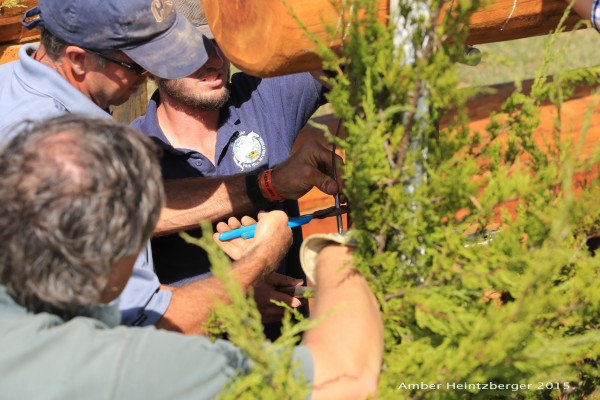This blog first appeared on HorseCollaborative.com in September, 2015
This year’s Plantation Field International was a really similar course to last year, but things got interesting on Sunday with a lot of horses galloping home without their riders. I don’t think the big fences were necessarily the problem. Most eliminations have little to do with the actual jump itself. You can run out of wind, scope, confidence, even bravery, as those big courses can take their toll over time.
At the end of the day we were more than an hour delayed, partly from taking the time to catch horses, and partly because we had to fix broken frangible pins. There were 9 pinned fences between the 2* and 3*, 11 if you count the 1*, which ran on Saturday. That’s about 10% of the total jumps on course.
The coffin broke three times. We had both jumps pinned, which I don’t think is necessarily the best technology for the first jump into a coffin, since horses tend to see the ditch and drop back a bit.
The big oxer broke twice—once when a horse’s hind end came down on it. In those cases you’re probably helping the horses get hurt a little less, but you’re not saving any horses. The last time they broke it was because the horse put his front legs down between the rails, and the pins in that situation most likely prevented a catastrophic situation. If we all stood around for half an hour fixing pins during the day, and the event was behind schedule, it was worth it for that last rider. If you save one horse, it’s all worth it.
We did not hear much grumbling about the delays. I think as long as we’re out there working hard to get things going again people are pretty patient. Part of the thing with the pins is that reverse pins, which are put on the back of the fence post, take longer to fix than the original straight pins, which go on the front of the post and are held in place with rope. The further the rail goes out on the pin, the easier to break a pin. It’s set to 9 pounds of torque and when a horse hits it hard it breaks. With the traditional pins, the horse’s body has to actually rotate to break the pin. They each have their place, but the back of an oxer is definitely the place for a reverse pin. Most designers have their own preferences—Derek diGrazia always does two reverse pins on oxers, while Mike E-S does reverse pins on the back of oxers but no pins on the front. It seems everyone has come up with their own formula through their own experiences.
MIM pins are another item to consider—they are on hinges and have red, fancy-looking clips that go on the side of the post. They break under horizontal pressure, while a standard pin breaks under downward pressure. The easiest way to explain it is comparing it to when you see a crash test with a car—the car hits the wall and the back of the car jumps up because the energy can’t go down and the car can no longer go forward, so the energy escapes by going up. With a horse, the hind end flips up, resulting in a rotational fall. If the horizontal energy is absorbed however, and the pin breaks, then the horse stops rotating.
It’s not foolproof, but it works often enough that it’s worth using it. The pins are the best thing we have at our disposal at this time.
Unfortunately, fixing broken pins makes for a hard, stressful day as a course builder. That’s about as hard as I’ve worked on cross-country day in a long time! It’s kind of the rule of numbers though, if you keep building big jumps and running a lot of horses over them, you’re going to have to work hard at some point, and the last few events we’ve done were relatively easy on competition day.
So what exactly are we doing when we repair a broken pin? Reverse pins are cabled and torqued tight, so you have to loosen them, undo the turn buckle to get slack in the cable in order to jack the rail back up, then put the pin back in pretty near perfect. The line in the pin has to line up with a nail placed under the rail, put the keeper pin through the pin and the sleeve and then you have to let the rail down and finally re-torque the cable with the torque wrench.
In every case on Sunday both pins were broken, which almost never happens. Fortunately, we had enough sets of pins to fix them all, but I only had one left at the end of the day. Also, with the last horse that fell, the turn buckle was stripped out. The rail falls about six inches onto a “keeper post”, which means you just lift the rail back up instead of having to lift it off the ground. In this particular instance however, the cable broke and the rail fell to the ground. So basically we had half a horse jump to build.
Then we had a horse get stuck in the trakehner. We took it apart and put it together and it was only a four-minute hold. As much as people were tired of waiting for me to fix things, I did some things right.
Fortunately, as difficult a day as it was, with all the horses running around and the various delays, most of the falls were minor and no horses were injured. Cody Sturgess was the only rider transported off course. The event was good advertising for the schooling cross-country course we built for Boyd—if you want to go clear at your next event, get over to Windurra and start schooling!
About the Author
Eric Bull is the owner of ETB Equine Construction, based in Scottsville, VA specializing in building attractive and safe cross-country obstacles, stadium jumps and providing the best in course design and management. www.etbjump.com.

